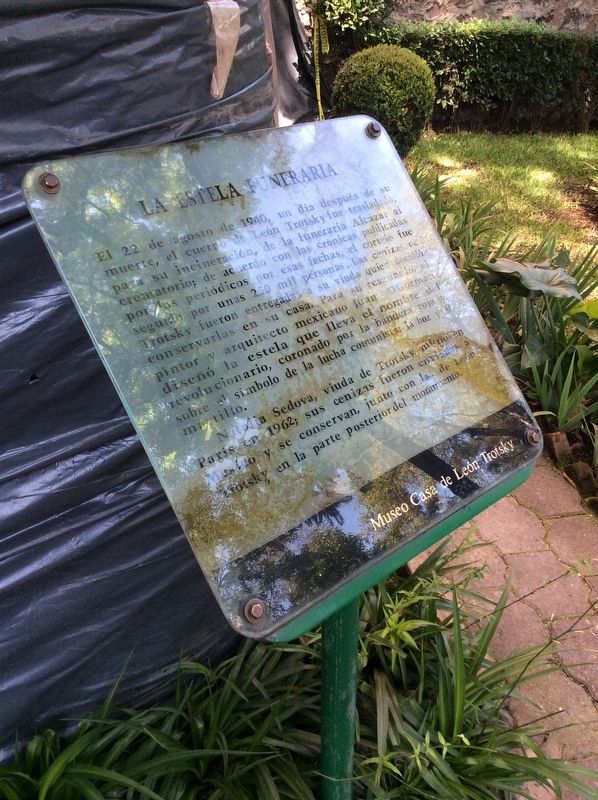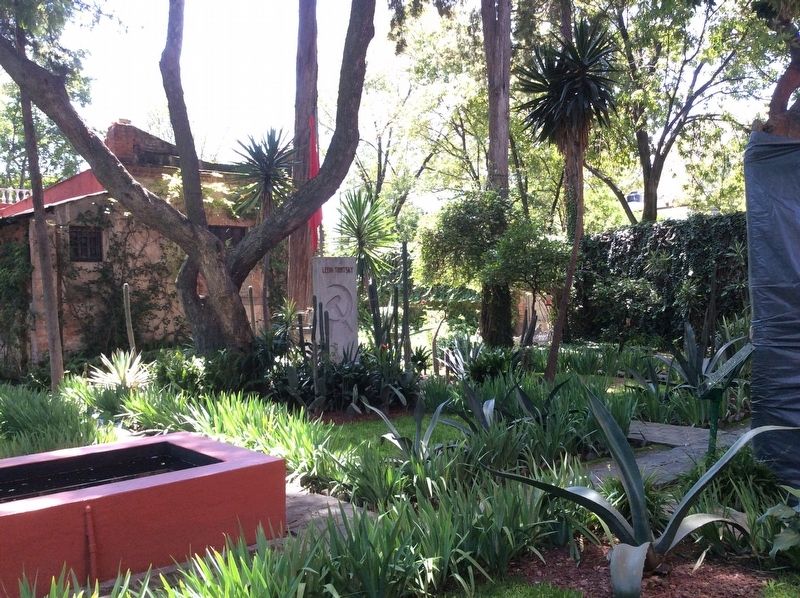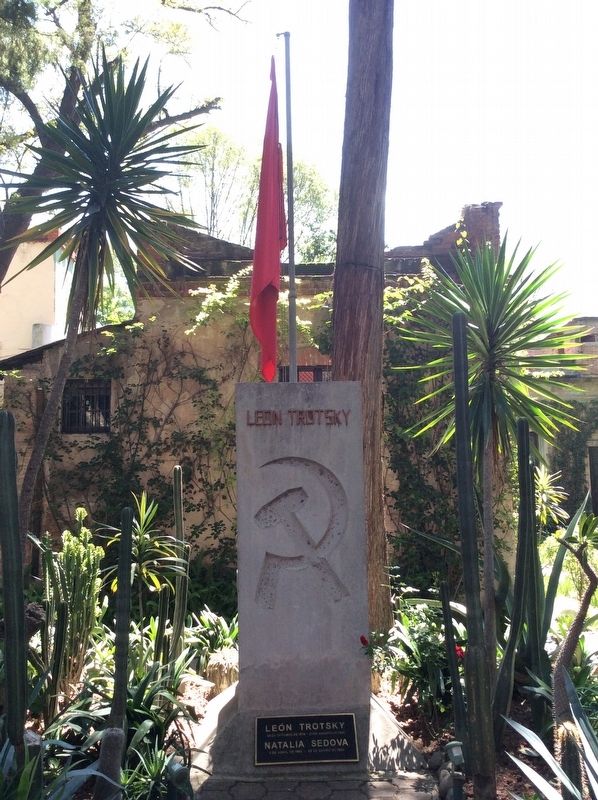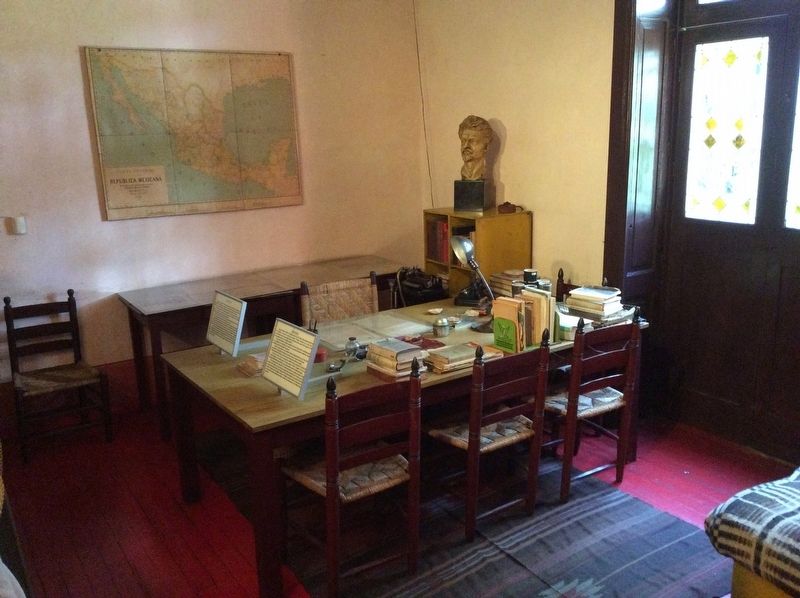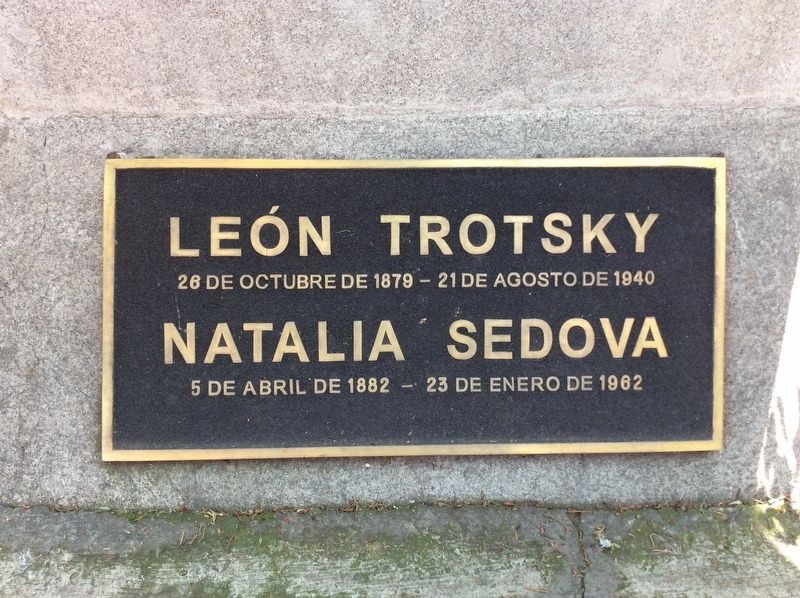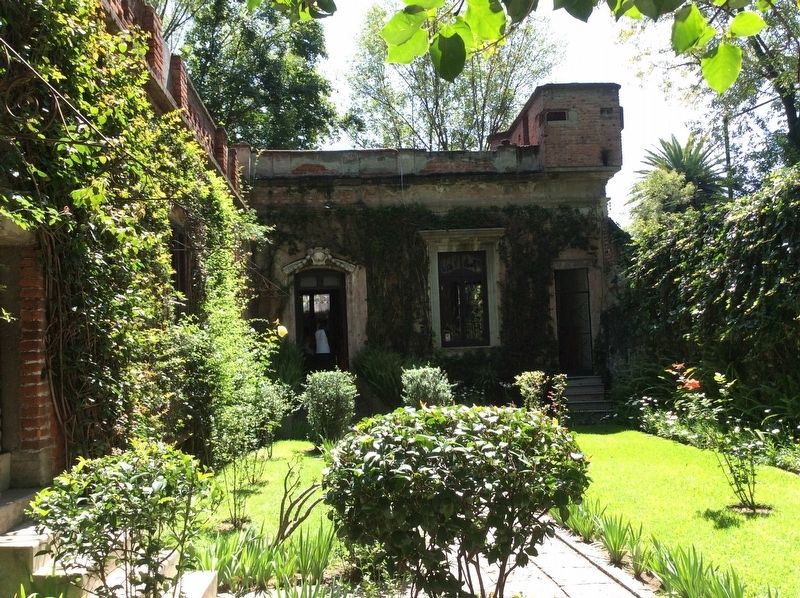Colonia Del Carmen in Ciudad de México, Mexico — The Valley of Mexico (The Central Highlands)
Leon Trotsky’s Funeral Column
Natalia Sedova, viuda de Trotsky, murió en París en 1962; sus cenizas fueron enviadas a México y se conservan, junta con las de León Trotsky en la parte posterior del monumento.
Topics. This historical marker is listed in this topic list: Government & Politics. A significant historical date for this entry is August 22, 1940.
Location. 19° 21.455′ N, 99° 9.56′ W. Marker is in Ciudad de México. It is in Colonia Del Carmen. Marker can be reached from Circuito Interior Avenida Río Churubusco. The marker is on the grounds of the Leon Trotsky House and Museum, towards the western portion of the grounds and the funeral column. The Museum is in the Coyoacán neighborhood, near the Frida Kahlo House and Museum. Touch for map. Marker is at or near this postal address: 410 Circuito Interior Avenida Río Churubusco, Ciudad de México 04100, Mexico. Touch for directions.
Other nearby markers. At least 8 other markers are within 3 kilometers of this marker, measured as the crow flies. Octavio Nicolás Fernández Vilchis (within shouting distance of this marker); Agustín Lara (approx. 0.6 kilometers away); House of Hernán Cortés (approx. 0.9 kilometers
away); The Defense at the Battle of Churubusco (approx. 1.2 kilometers away); Monument to the Mexican Fallen of 1847 (approx. 1.2 kilometers away); Convent of Our Lady of the Angels of Churubusco (approx. 1.2 kilometers away); Saint Patrick Battalion Plaza (approx. 1.2 kilometers away); Chapel of San Lorenzo Martyr (approx. 2.8 kilometers away). Touch for a list and map of all markers in Ciudad de México.
Also see . . . Leon Trotsky. "Leon Trotsky, born Lev Davidovich Bronstein (b. 7 November 1879 – d. 21 August 1940) was a Marxist revolutionary, theorist, and Soviet politician. Initially supporting the Menshevik Internationalists faction within the Russian Social Democratic Labour Party, he joined the Bolsheviks ("majority") just before the 1917 October Revolution, immediately becoming a leader within the Communist Party. He would go on to become one of the seven members of the first Politburo, founded in 1917 to manage the Bolshevik Revolution. During the early days of the Russian Soviet Federative Socialist Republic (RSFSR) and the Soviet Union, he served first as People's Commissar for Foreign Affairs and later as the founder and commander of the Red Army, with the title of People's Commissar of Military and Naval Affairs. He became a major figure in the Bolshevik victory in the Russian Civil War (1918–1923). After leading a failed struggle of the Left Opposition against the policies and rise of Joseph Stalin in the 1920s and against the increasing role of bureaucracy in the Soviet Union, Trotsky was removed from power (October 1927), expelled from the Communist Party (November 1927), exiled to Alma–Ata (January 1928), and exiled from the Soviet Union (February 1929). As the head of the Fourth International, Trotsky continued to oppose the Stalinist bureaucracy in the Soviet Union from exile. On Stalin's orders, he was assassinated in Mexico in August 1940 by Ramón Mercader, a Spanish-born Soviet agent. Trotsky's ideas formed the basis of Trotskyism, a major school of Marxist thought that opposes the theories of Stalinism. He was written out of the history books under Stalin, and was one of the few Soviet political figures who was not rehabilitated by the government under Nikita Khrushchev in the 1950s. It was not until the late 1980s that his books were released for publication in the Soviet Union, which dissolved a short time later." (Submitted on August 10, 2017, by J. Makali Bruton of Accra, Ghana.)
Credits. This page was last revised on April 17, 2020. It was originally submitted on August 10, 2017, by J. Makali Bruton of Accra, Ghana. This page has been viewed 368 times since then and 35 times this year. Photos: 1, 2, 3, 4, 5, 6. submitted on August 10, 2017, by J. Makali Bruton of Accra, Ghana.
